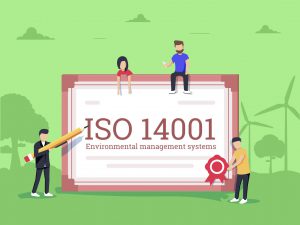The Evolution of the Environmental Management System – From Stockholm to ISO 14001;2015.
It would be easy to believe that environmental awareness is a new thing, brought to global attention by a campaign generation with members such as Greta Thunberg. In reality, it’s a movement that’s been alive and well since the 60’s and is experiencing a boost thanks to new discoveries and advances in technology.
In fact, it may come as a surprise that organisations have been implementing Environmental Management Systems (EMS) since the 1970’s, when the 1972 UN Conference in Stockholm focused on establishing principles and guidance for the preservation of the environment.
However, it wasn’t until 1992 that the first environmental standard was published by BSI (the British Standards Institute). BS7750 was aimed primarily at manufacturing and service organisations, and allowed the organisation to demonstrate compliance with health and safety as well as local and national environmental requirements. Around the same time, a number of countries launched their own environmental standards, and the European Commission launched EMAS (Eco-Management and Audit Scheme), which followed similar lines to BS7750, but included extra requirements such as public reporting.

In 1993, it was decided that there would be a series of standards for environmental management, and a committee was formed for the purpose of developing the 14000 series. However, it wasn’t until 1996 that ISO14001 was published for the first time.
Eight years later, in 2004, the standard was revised with the intention of clarifying existing requirements, introducing additional requirements, and allowing for integration with other standards such as ISO 9001 for Quality Management.
The standard began to grow in popularity rapidly from this point on, particularly with the implementation of an array of legislative improvements for the protection of the environment, and the benefits and positives of having an EMS becoming known on a wider scale.
The most recent incarnation of the standard was launched in 2015, implementing a high level structure called Annex SL. This ensured a more uniform approach across ISO standards, eased the path for integration of multiple standards, and helped reduce duplication where organisations had existing ISO management systems.
 The 2015 revision also removed requirements for mandatory procedures and introduced new requirements for “The Needs and Expectations of Interested Parties”, and “Addressing Risks and Opportunities”.
The 2015 revision also removed requirements for mandatory procedures and introduced new requirements for “The Needs and Expectations of Interested Parties”, and “Addressing Risks and Opportunities”.
Of course there is an increasing demand for organisations to prove that they are environmentally responsible, and that their business activities are sustainable. Fortunately ISO 14001;2015 is not only accessible, but most importantly is suitable for organisations of any size, type, or sector. From manufacturing to retail, 1 employee to unlimited numbers of staff, and whether private or public sector, ISO 14001;2015 is designed to be adaptable to your organisation’s needs.
Whether you’ve got vague future plans, you’re considering an EMS, or you’re thinking of going for the full ISO 14001;2015 certification, our expert consultants are happy to help. Please don’t hesitate to contact us.
Keep up-to-date with news across our services and brands.


